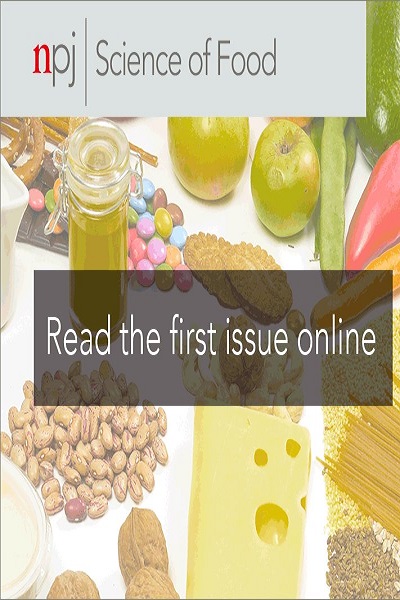Perforated imprinting on high moisture meat analogue confers long range mechanical anisotropy resembling meat cuts
IF 6.3
1区 农林科学
Q1 FOOD SCIENCE & TECHNOLOGY
引用次数: 0
Abstract
Meat cuts, when cooked and masticated, separate into fibrous structures because of the long-range mechanical anisotropy (LMA) exhibited by muscle fascicles, which is not fully recapitulated in alternative proteins produced using molecular alignment technology like high moisture extrusion. We have developed a scalable perforated micro-imprinting technology to greatly enhance LMA in high moisture meat analogue (HMMA). By imprinting 1 mm thick HMMA sheets with perforated patterns (optimized by AI), we observed up to 5 × more anisotropic separation of fibrous structures in a one-dimensional pulling LMA analysis, to match the fibrousness of the cooked chicken breast, duck breast, pork loin and beef loin. We stacked and bound imprinted sheets with transglutaminase (TG) to produce imprinted whole-cuts. Controlling fiber separation in the imprinted cuts achieved hardness ranging from 6578 g to 18467 g (2 cm × 2 cm × 1 cm, 50% strain), which matched meats from different species. Imprinted cuts improved meat-like fiber separation over HMMA when masticated, measured by Euclidean distances (0.057 and 0.106 respectively) to animal meat cuts on image features. In sensory evaluation, imprinted cuts improved consumer acceptance by 33.3% and meat-like fibrousness by 20%, by significantly enhancing the HMMA appearance, texture, and mouthfeel.

求助全文
约1分钟内获得全文
求助全文
来源期刊

NPJ Science of Food
FOOD SCIENCE & TECHNOLOGY-
CiteScore
7.50
自引率
1.60%
发文量
53
期刊介绍:
npj Science of Food is an online-only and open access journal publishes high-quality, high-impact papers related to food safety, security, integrated production, processing and packaging, the changes and interactions of food components, and the influence on health and wellness properties of food. The journal will support fundamental studies that advance the science of food beyond the classic focus on processing, thereby addressing basic inquiries around food from the public and industry. It will also support research that might result in innovation of technologies and products that are public-friendly while promoting the United Nations sustainable development goals.
 求助内容:
求助内容: 应助结果提醒方式:
应助结果提醒方式:


